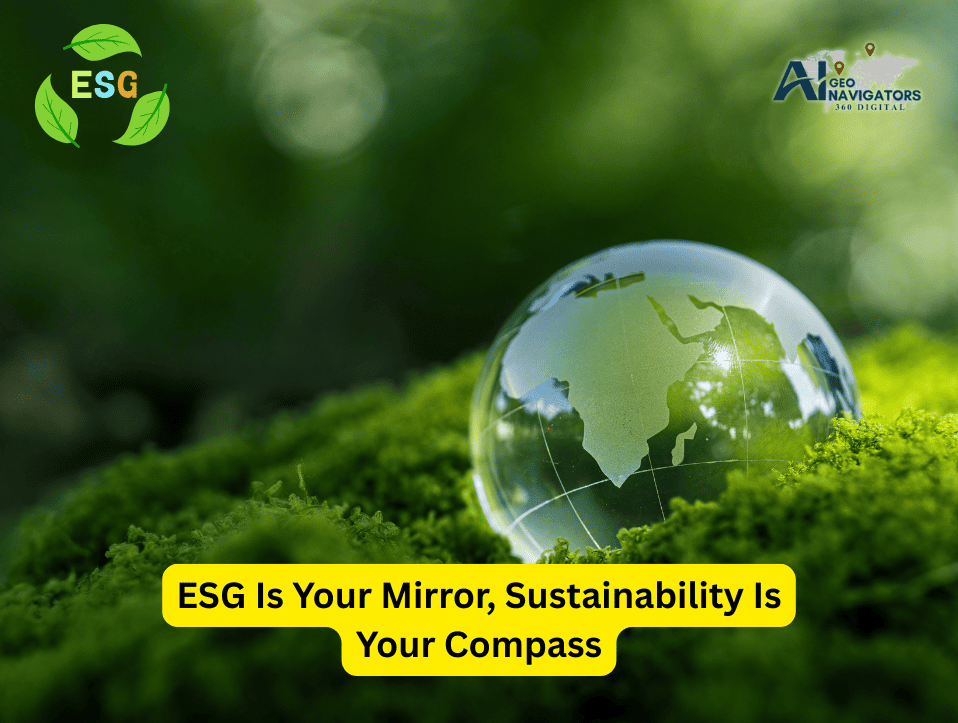Many organizations up to 90% according to recent surveys, still conflate ESG reporting with a full-fledged sustainability strategy. While this overlap might appear efficient on paper, it often stifles genuine business transformation in practice.
Too many companies are erecting siloed ESG team’s laser-focused on compliance. What they really need are engines of dynamic sustainability that drive innovation and long-term resiliency.
ESG and sustainability are inextricably linked, but they are by no means the same thing. All of them require special skills, business models, and mindsets to play its part successfully.
ESG: The Mirror Reflecting Your Current Performance
ESG (Environmental, Social and Governance) is your company report card which is a backward looking mirror that examines previous operations in terms of responsibility and accountability.
It places focus on compliance, open disclosures and sound governance, provides investors, regulators and other stakeholders with measurable evidence of ethical behaviour and risk aversion.
At its core, ESG poses a fundamental question: “Can we prove we’re not inflicting harm?”
It is a highly effective framework that guarantees compliance with regulations and safeguarding your reputation. But its eyes are stridently retroactive: it takes an account of what has already occurred, rather than what might occur next.
Sustainability: The Compass Charting Your Path Forward
In contrast sustainability is inherently prospective, a strategic North Star guiding how your organization will flourish amid finite resources, escalating climate pressures and evolving societal expectations.
It tackles a bolder inquiry: “How will we expand responsibly while restoring the ecosystems and communities we rely on?”
When executives declare, “Our ESG team handles all sustainability efforts,” it frequently reveals a myopic, compliance-centric lens, where rote adherence eclipses bold creativity. The fallout is all too common:
- Flawless reports paired with stagnant change.
- Disclosures spotlighting business models that are fundamentally unsustainable.
- Compliance dashboards eclipsing visionary, horizon-scanning strategies.
Two Distinct Functions, Dual Missions, One Unified Horizon
From our vantage at AI Geo Navigators, this functional blurring is a persistent pattern across industries, from manufacturing to finance. The trailblazers? They’re the ones who’ve decoupled ESG from sustainability, while forging tight alignment through a cohesive enterprise vision.
In these progressive powerhouses:
- ESG nests under finance and legal: Championing compliance, crystal-clear transparency, and proactive risk stewardship.
- Sustainability embeds in strategy and operations: Igniting innovation pipelines, orchestrating transformative shifts, and unlocking sustained value creation.
This deliberate separation empowers synergy, one function anchors accountability, the other accelerates momentum, paving the way for holistic progress.
The Bottom Line
ESG safeguards your license to operate today. Sustainability claims your right to thrive tomorrow.
Leaders who grasp this nuance and embed it into their DNA, aren’t just surviving the sustainability imperative; they’re shaping responsible growth playbook for the decade ahead.


No responses yet